For victim-turned-guide, Iraq gas attack still vivid
In 1988, Iraqi jets sprayed chemical agents that left residents coughing up green vomit before dying in agony.
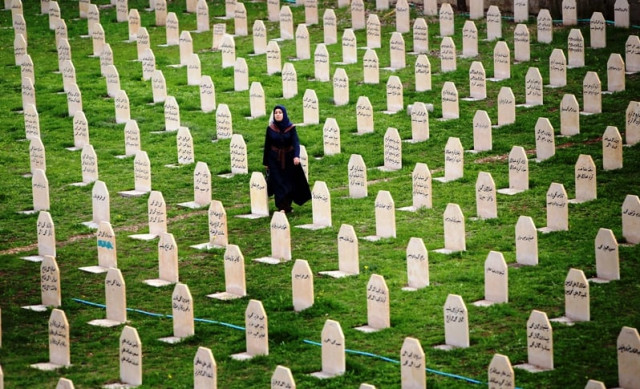
A file picture taken on March 16, 2014 shows an Iraqi Kurd woman visiting a grave yard for the victims of a gas attack by former Iraqi president Saddam Hussein in 1988, as people mark the 26th anniversary of the attack in the Kurdish town of Halabja, 300 kms northeast of Baghdad. PHOTO: AFP
The 40-year-old vividly recalls the horrifying period more than a quarter century ago when his family was killed by a gas attack launched by the regime of former dictator Saddam Hussein, believed to be the worst ever against civilians.
Now, he walks groups of tourists, visiting civil servants and students around a monument dedicated to the attack in the northern Kurdish town of Halabja, which lies in Iraq's autonomous northern Kurdish region, a short drive from neighbouring Iran.
"I want to convey the story of Halabja to people both outside and inside Kurdistan," Rashid says. "I want to tell them that Halabja is not a city of one incident or event.
"It is a city of many calamities and disasters."
As Iraq's eight-year war with Iran was coming to an end, Kurdish peshmerga rebels, with Tehran's backing, took over the farming community of Halabja.
The Iraqi military bombed the area, forcing the rebels to retreat into the surrounding hills, leaving their families behind.
Then, at 11:35 am on March 16, 1988, Iraqi jets swooped over the town, spraying a cocktail of chemical agents including mustard gas that left residents writhing and coughing up green vomit before dying in agony.
An estimated 5,000 people were killed, three-quarters of them women and children.
Just a teenager at the time, Rashid remembers his family piling into a pick-up truck to try to escape. Apart from him, however, everyone died of suffocation.
He has a photograph of the truck packed with around 25 dead villagers, including members of his family, stopped on the road with the driver slumped over the wheel.
"When we escaped Halabja, we saw many martyrs on the streets, but we could not help them because we had already been affected by the chemical gas," he says.
He himself briefly slipped into a coma, to the point that rescue workers thought he had also died and placed him in a coffin before he awoke again.
The man who ordered the attack, Saddam's enforcer Ali Hassan al-Majid, better known by his macabre nickname "Chemical Ali," was hanged for the crime in January 2010.
Majid said he took action against the Kurds, who had sided with Iraq's enemy Iran in the war, for the sake of Iraqi security, and refused to express remorse.
Officials marked the anniversary of the attack in 2012 by handing local authorities in Halabja the rope used to hang Majid, and last year commemorated the 25th anniversary of the killings.
Memories of the gas attack flooded back last summer, when the Syrian regime allegedly carried out a chemical weapons attack near Damascus that killed hundreds.
Threatened with military action by Washington over the incident, Syria's government agreed to turn over its chemical arsenal.
"When I was watching the television and saw what happened in Syria, I began to cry," Rashid recalls. "I saw my parents, my sisters my brothers, when they died.
"I felt they went through the same as our suffering, during the dictator's regime."
"I cannot forget that tragedy."
Indeed, rather than try to forget the killings, Halabja's residents have sought to openly commemorate them.
A cemetery bears the names of all those who died on headstones, whether or not their bodies were found, with a small monument at the entrance depicting a woman apparently praying for the victims.
And at the monument where Rashid works, which lies on the edge of the town, visitors are taken through a small hallway where pictures of the attack line the walls, while necklaces, watches and other possessions belonging to the victims are on display.
"It is an honour for me to work here, to tell people about this tragedy for future generations," Rashid says.
"Despite all the pain in this work, I want to work here, to tell the history of what happened in Halabja, and how I lost my family."

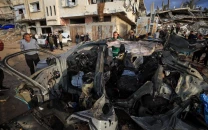

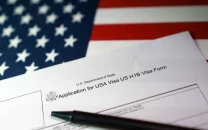
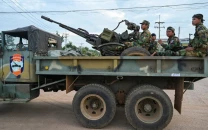
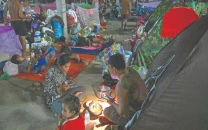
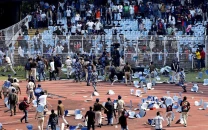











COMMENTS
Comments are moderated and generally will be posted if they are on-topic and not abusive.
For more information, please see our Comments FAQ